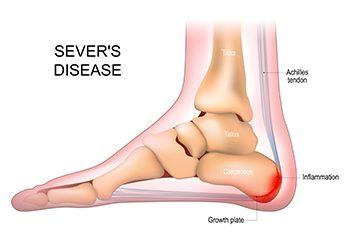
Navigating a child's heel pain, particularly in the context of Sever's disease, demands careful attention. This condition primarily targets children during their adolescent growth spurts, typically affecting girls aged 8 to 13 and boys aged 10 to 15. As children grow, their bones elongate from growth plates, soft areas of cartilage near the ends of bones, which eventually solidify. Sever’s disease arises when the calf muscle and Achilles tendon excessively pull on the immature heel bone, which continues to develop until approximately age 15. Athletes engaged in high-impact sports face a higher risk for Sever's disease, but less active children can also be affected. Symptoms include pain on the sides or margins of the heel, which may increase with activities like standing on tiptoes or running. Diagnosis relies on symptoms, as X-rays cannot confirm Sever's disease but may rule out other causes. While symptoms may persist for several months, prompt recognition and appropriate intervention can help children effectively manage and alleviate the heel pain associated with Sever’s disease. For help in managing your child’s heel pain, it is suggested that you schedule an appointment with a podiatrist.
Sever's disease often occurs in children and teens. If your child is experiencing foot or ankle pain, see Dr. Michael A. Wood from Foot Health Institute. Our doctor can treat your child’s foot and ankle needs.
Sever’s Disease
Sever’s disease is also known as calcaneal apophysitis, which is a medical condition that causes heel pain I none or both feet. The disease is known to affect children between the ages of 8 and 14.
Sever’s disease occurs when part of the child’s heel known as the growth plate (calcaneal epiphysis) is attached to the Achilles tendon. This area can suffer injury when the muscles and tendons of the growing foot do not keep pace with bone growth. Therefore, the constant pain which one experiences at the back of the heel will make the child unable to put any weight on the heel. The child is then forced to walk on their toes.
Symptoms
Acute pain – Pain associated with Sever’s disease is usually felt in the heel when the child engages in physical activity such as walking, jumping and or running.
Highly active – Children who are very active are among the most susceptible in experiencing Sever’s disease, because of the stress and tension placed on their feet.
If you have any questions, please feel free to contact one of our offices located in Lansing, and Chicago, IL . We offer the newest diagnostic and treatment technologies for all your foot and ankle injuries.
